Interview and translation by Naoko Sakazume
Edited for brevity and clarity by Wesley Keppel-Henry
Meet Kinya Sekimoto
Kinya Sekimoto (関本 欣哉) is one of the most prominent figures in the Sendai art scene. He opened his flagship gallery, TURNAROUND, in October 2010, in a quiet neighborhood near the Hirose River. He has recently also opened a second, larger gallery called TURN ANOTHER ROUND, near the bustling business district of downtown Sendai.
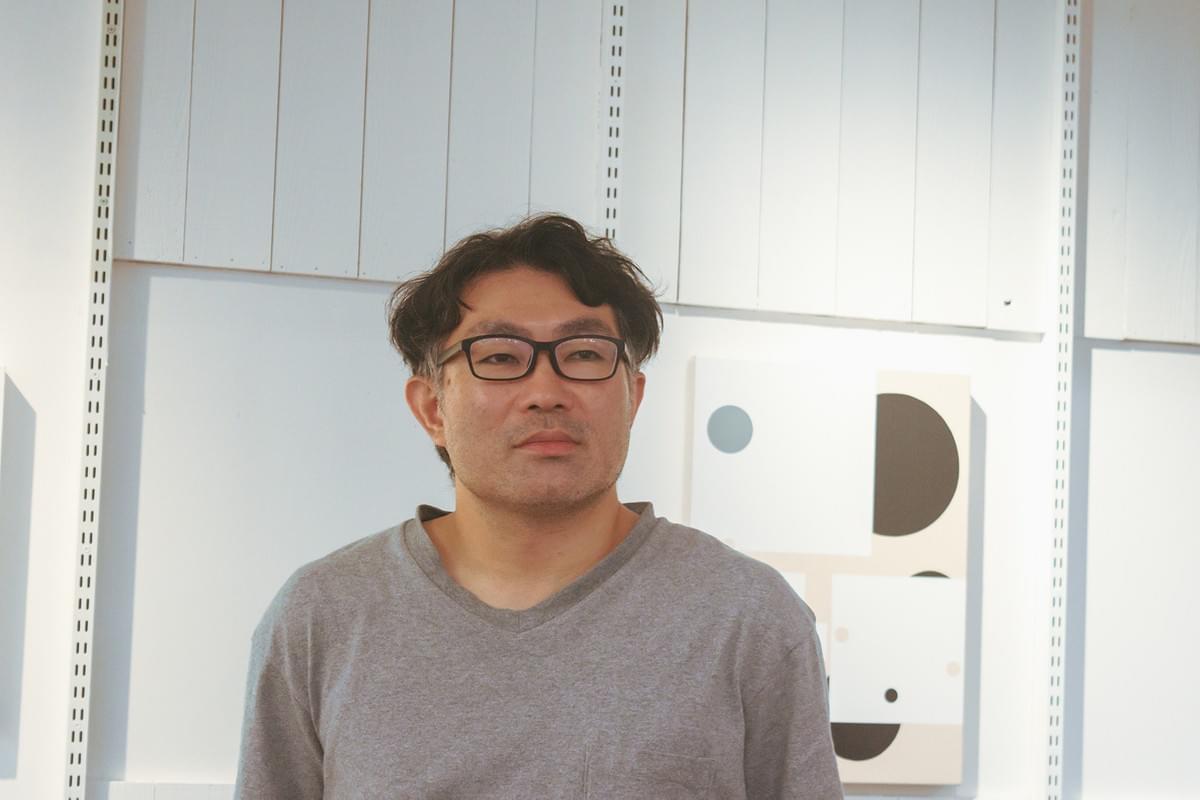
Sendai Motions: You graduated from an art school in Tokyo, and then returned to Sendai, where you had grown up. What made you decide to start Gallery TURNAROUND in Sendai, not Tokyo?
Kinya Sekimoto: The reason why I originally started art activities was to present my own expression towards society and politics, touching on topics like daily life, the difficulty of living, and resentment towards authority. It was not in Tokyo, but in Sendai where I became aware of these issues. There were many reasons why I came back to Sendai from Tokyo, but I am now working in Sendai because I want to continue this expressing of social issues with my feet on the ground in the place where I was born and raised.
"The distance between artists and people in fields other than art is much closer than in a big city like Tokyo." —Kinya Sekimoto
SM: What are your goals for Gallery TURNAROUND and TURN ANOTHER ROUND?
KS: When I was in Tokyo, I realized that it is very easy to live in a society that accepts a variety of people and ideas. It's not that I prefer Tokyo, but I grew up in Sendai and lived here all the way through high school, so felt fed up with the fact that everyone around me knew me. When I moved to Tokyo, where no one knew me, I didn't care what other people thought of me or if they thought I was weird. I realized how easy it was for me to live in such an environment, and I wanted to create such an environment here when I returned to Sendai.
At FORUS [the building TURN ANOTHER ROUND is located in], we often get visitors who are not usually involved in art, such as office workers. I want to be able to interact with them and make them feel accepted. I'd like to make Sendai a city like that through my activities at TURN ANOTHER ROUND. Gallery TURNAROUND, on the other hand, is more of an exhibition space for taking social action. It may be an exaggeration to say that I want to create a society, but to the extent I am able to make TURNAROUND place with as much of a fun and diverse culture as I can.

The tenth annual Sendai Independants Exhibition, hosted by TURNAROUND
SM: How do you see the Sendai art scene, as an art professional?
KS: What I find interesting is that in a regional city like Sendai, the distance between artists and people in fields other than art is much closer than in a big city like Tokyo, and they get along well with each other. If you are in the art scene in Tokyo, you tend to meet and work only with people in the art scene, but in Sendai, you can be closer to people in fields other than art, such as city planning, social activity groups, NPOs, and even professors at Tohoku University, so you become more interested in each other's activities. I also like the fact that Sendai is a compact city.
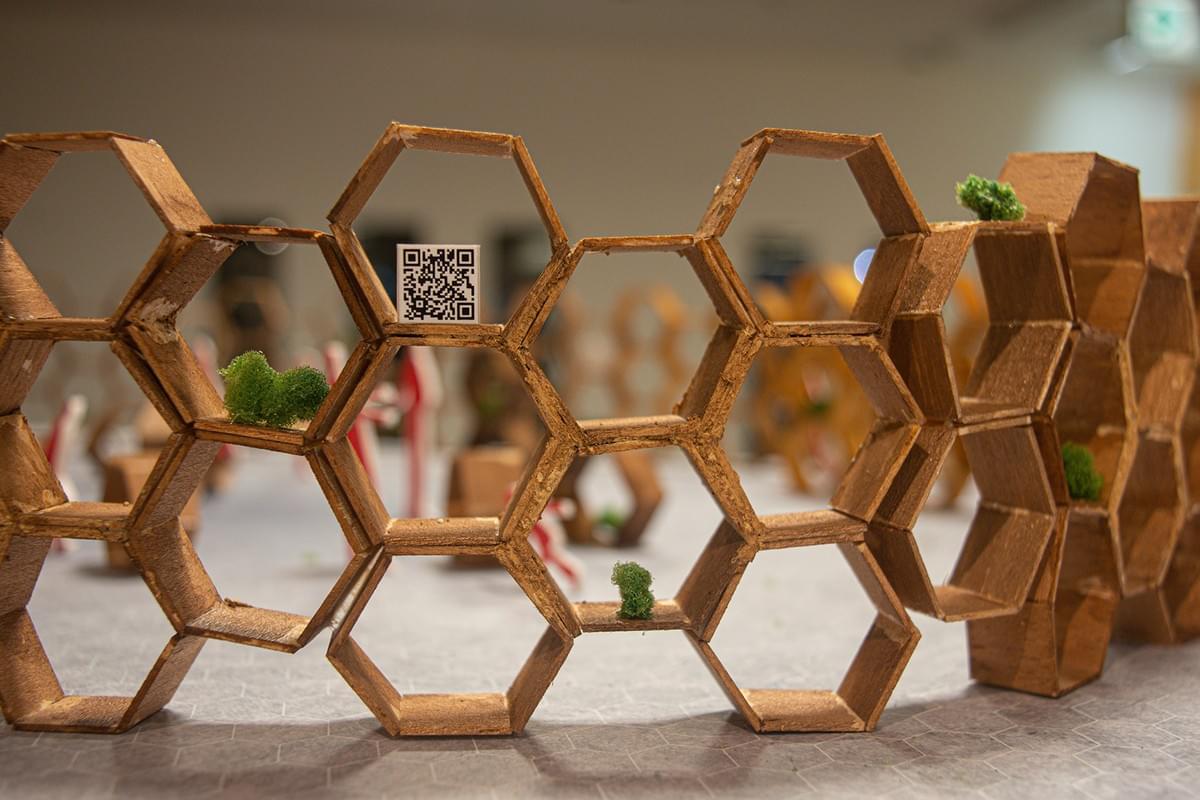
Tsunagu –Space Lattice– by Koji Ikeda (池田浩二) & Yohei Terada (寺田遥平) at TURN ANOTHER ROUND
SM: What sort of art do your galleries exhibit?
KS: Since we mainly deal with contemporary art, we are always conscious of contemporaneity; we exhibit artists who are aware of “the expressions of our time.” When an artist rents out a space in one of our galleries, their exhibition can be of any genre.
SM: How can people visit your galleries?
KS: It's always free to enter. Sometimes there are events that require a fee to attend, but all of the exhibitions are free of charge.
Gallery TURNAROUND
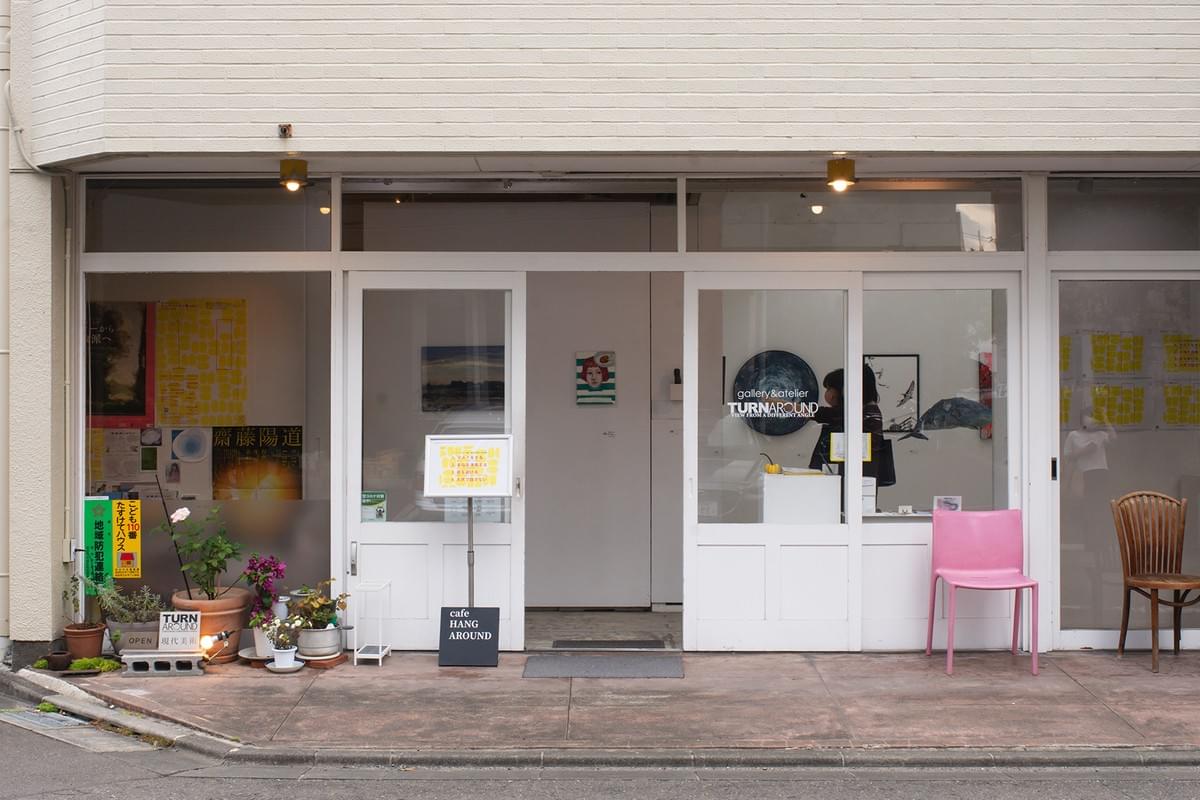
The exterior of TURNAROUND and HANGAROUND, in a quiet neighborhood near the Hirose River
SM: Please tell us about Gallery TURNAROUND.
KS: Gallery TURNAROUND holds both gallery-sponsored exhibitions as well as exhibitions by artists who have rented out the space. For the gallery-rental exhibitions, anyone can rent out the space as long as it is not for slanderous or explicitly political purposes. As for the gallery-sponsored exhibitions, we hold them about once every two months, half for Sendai-based artists and half for artists from elsewhere.
Cafe HANGAROUND
Mr. Sekimoto has also opened a cafe, HANGAROUND, in the space next to Gallery TURNAROUND. Surrounded by bookshelves lined with art-related books, visitors can relax here while enjoying top-notch coffee and other beverages, plus light meals.

The homey interior of Cafe HANGAROUND, with its free-to-read collection of art books
SM: What is unique about Cafe HANGAROUND?
KS: The reason for having a cafe is that I wanted to create a place where artists and visitors can relax and chat over a coffee. Before the pandemic, we would hold reception parties, gallery talks, and other events where artists and visitors could interact with each other during special exhibitions. These events are being held online for now, but basically the cafe aims to create such a place.
SM: It’s nice to have a cup of coffee or tea at the cafe after viewing the exhibition at the gallery.
KS: Exactly! If you are lucky, you can meet the artists and talk about their work. The artists get tired if they stay only in the gallery, so I hope they can chat with visitors in the cafe.
SM: Are the artists always present during the exhibition?
KS: It depends on the artist. In addition to exhibitions, artists also sometimes hold events here, so you can meet them at those as well.
TURN ANOTHER ROUND
Mr. Sekimoto's second gallery, TURN ANOTHER ROUND, is located in the heart of Sendai in a space called "even" on the seventh floor of the FORUS building. In addition to the art gallery TURN ANOTHER ROUND, "even" also features a DIY studio, a video recording studio and a workshop space, as well as a gallery shop.
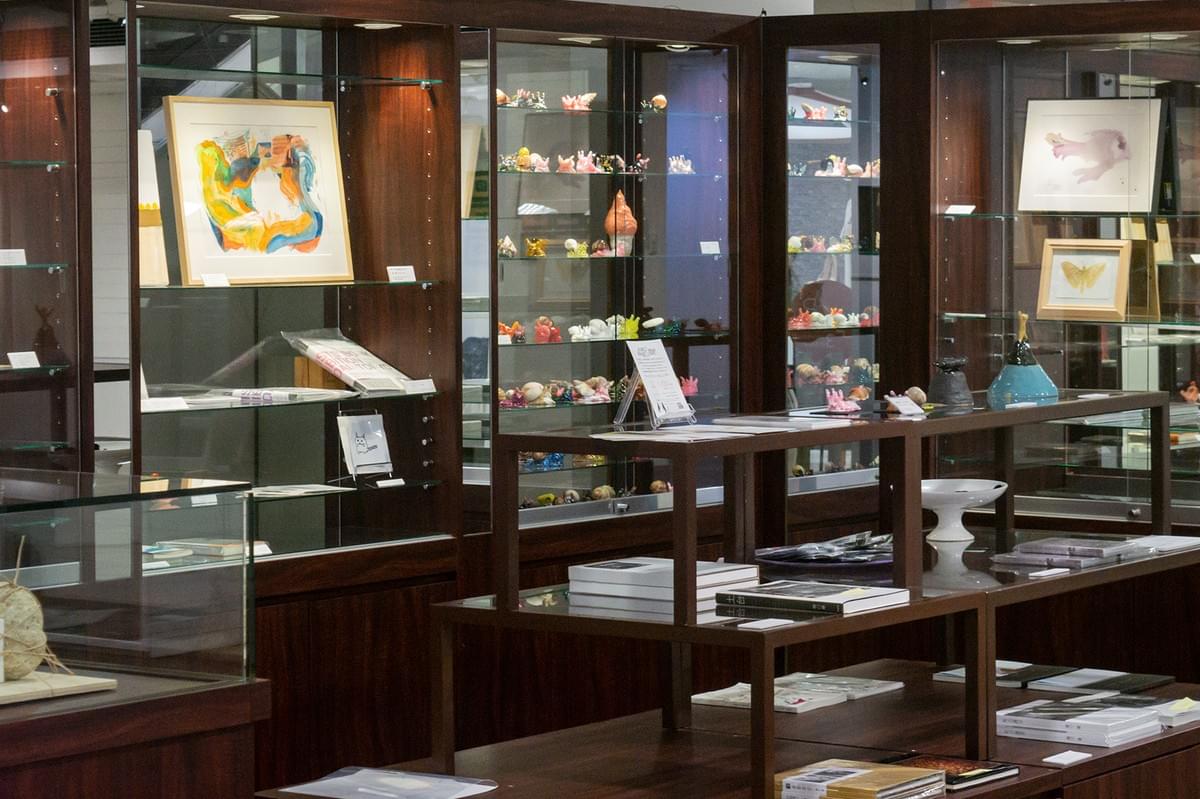
The shop at TURN ANOTHER ROUND carries pieces by Sendai artists and others who exhibit in the gallery
SM: Please tell us about TURN ANOTHER ROUND.
KS: We always have exhibitions and workshops going on there. I opened it for exhibitions, but I also wanted it to be a place where people could come and express themselves and take action. We’ve actually just opened studio and workshop spaces in TURN ANOTHER ROUND, where people can make things. The workshop is equipped with a 3D printer, a CNC router, and other tools for digital fabrication. We’ve got a variety of tools there for making things, such as cutters and saws. We’ve also got drones, cameras, and music equipment, that members can use, and so much more—you'll be surprised! Members can just come in and do anything they want. We also have a distribution studio, so you can come without any equipment and broadcast your Webinar or YouTube stream. Anyone can become a member for an interesting annual membership fee.
Commercial facilities like FORUS aren’t actually all that well suited for exhibitions because of the strict fire regulations. But because of its location, FORUS has the advantage of attracting a variety of people. I hope that TURN ANOTHER ROUND will become a place where ordinary people, not just people already part of the art scene, can come to solve problems and take action on their own. I created this place with the intention of encouraging people to try things on their own first, instead of asking a contractor to do it for them. You can even bring broken things from home and repair them here!
SM: That’s amazing! Are there any instructors?
KS: For digital fabrication, an instructor will be teaching once a month. We also have staff members with knowledge of video production, so we can help teach that a little bit too. We always have operators on staff, so if you need any help, please feel free to ask.
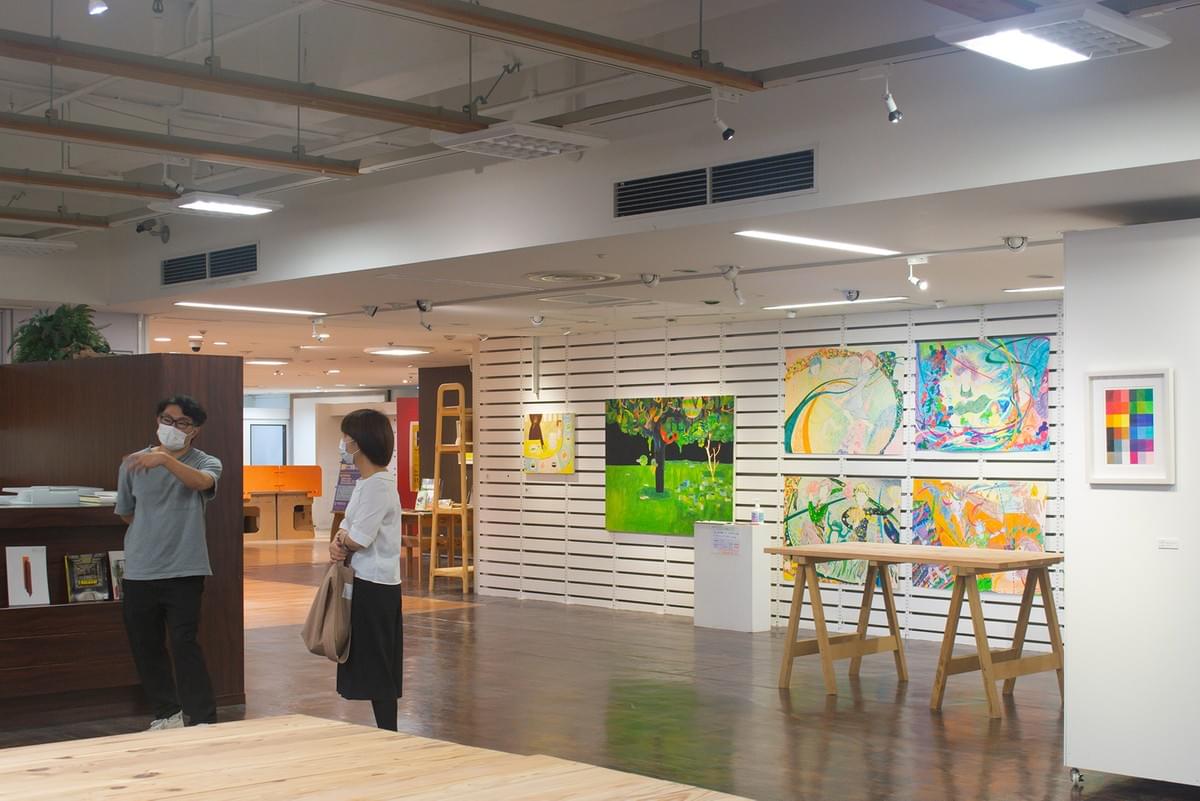
Mr. Sekimoto giving Sendai Motions a tour of his new gallery TURN ANOTHER ROUND
SM: What is the difference between exhibitions at TURNAROUND versus TURN ANOTHER ROUND?
KS: TURN ANOTHER ROUND is recommended for artists who want to hang two-dimensional works on the wall or put sculptures on the floor because of the restrictions due to the aforementioned fire laws. We discuss this with the artists and help them decide which is the best gallery for them to exhibit in. TURNAROUND is better for artists who want to make special use of space for installations and videos.
Get involved
Feeling inspired? Mr. Sekimoto would love for you to come and get involved! TURNAROUND and TURN ANOTHER ROUND are always looking for volunteers to help with translations and native-speaker checks of previously translated materials—not just for English, but also for other languages.
KS: Places like TURNAROUND and TURN ANOTHER ROUND need to hear about diversity and different people's ideas. I hope that more people from foreign countries will come and join us. If you are interested in activities other than translation, please feel free to contact us about that as well!
For details about translation, native-checking, and other volunteer opportunities, please contact info@turn-around.jp!
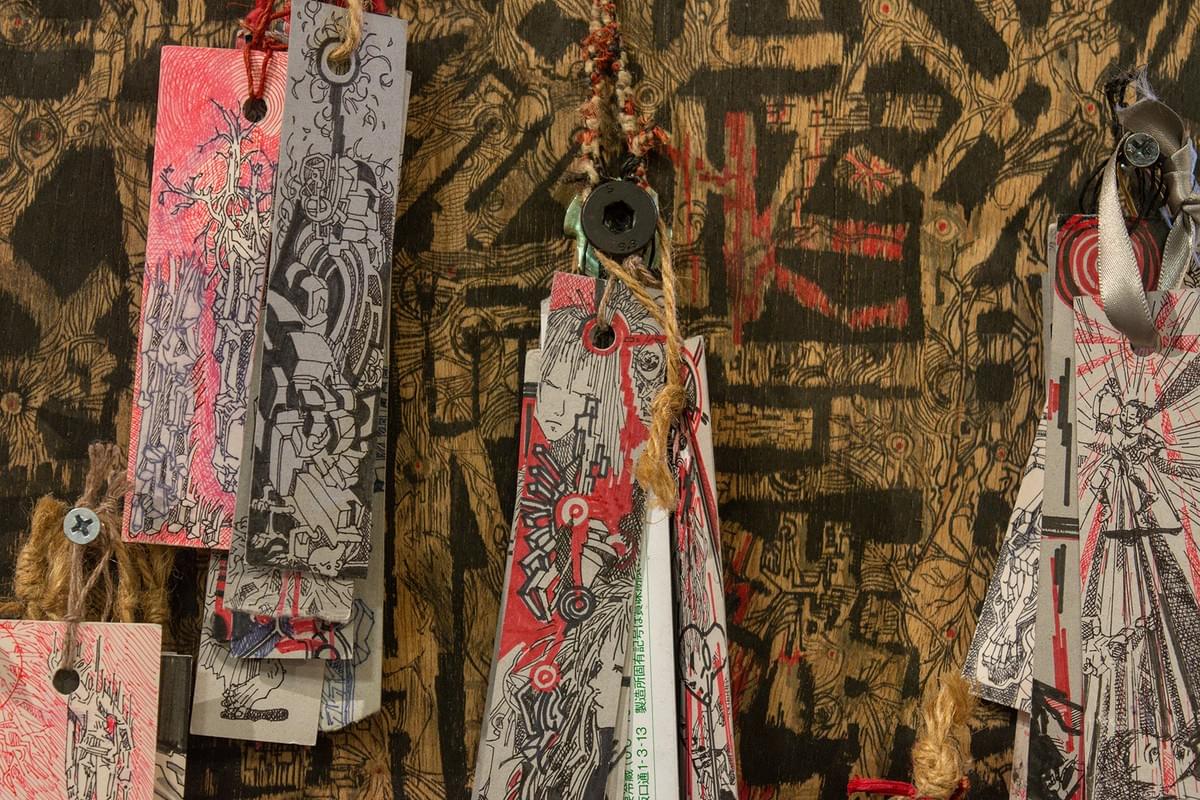
Shiori by Tomohisa Suzuki at Gallery TURNAROUND
Details
gallery & atelier TURNAROUND・ギャラリー&アトリエ ターンアラウンド
&
cafe HANGAROUND・カフェ ハングアラウンド
Hours: 11:00–19:30 Tuesday–Saturday, 11:00–17:00 Sunday
Closed days: Mondays, Irregular holidays
Admission: Free
Official website: turn-around.jp
Telephone: 022-398-6413
Address: Hisamitsu Building 1F Otemachi 6-22, Aoba Ward, Sendai-shi, Miyagi-ken (〒980-0805
宮城県仙台市青葉区大手町6-22 久光ビル1階)
Access: 5-minute walk from Omachi Nishi-koen Station
even / TURN ANOTHER ROUND・イーブン/ターンアナザーラウンド
Hours: 10:00–20:00
Closed days: Irregular. Usually only the few days out of the year when the entire FORUS building is closed.
Admission: Free
Official website: forus.co.jp
Telephone: 022-796-3308
Address: FORUS Building 7F, Ichibancho 3-11-15, Aoba Ward, Sendai-shi, Miyagi-ken (〒980-8546 宮城県仙台市青葉区一番町 3-11-15)
Access: 3-minute walk from Hirose-dori Station, 5-minute walk from Aoba-dori Ichibancho Station, or 10-minute walk from Sendai Station

